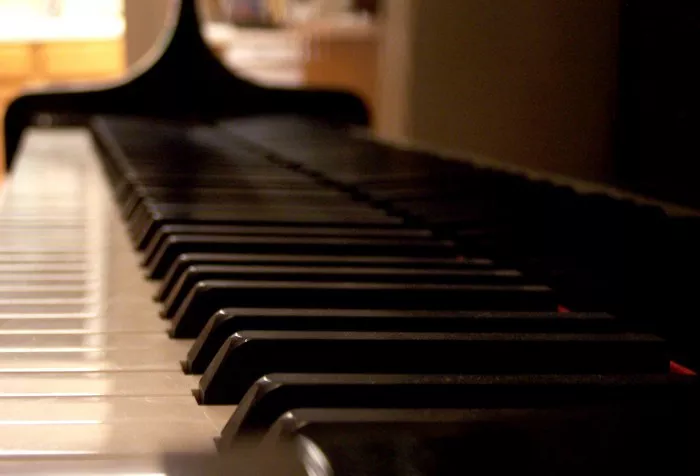Learning to play the piano is a fulfilling endeavor that offers numerous cognitive and emotional benefits. However, for many aspiring pianists, the decision between learning on a keyboard or an acoustic piano can be daunting. One common question that arises is whether it’s acceptable to learn piano on a keyboard. In this article, we’ll delve into this query and provide comprehensive insights to help individuals make informed decisions about their musical journey.
Is it Okay to Learn Piano on a Keyboard?
Let’s start by affirming that it is entirely possible to learn piano on a keyboard. While traditionalists may argue that an acoustic piano provides the most authentic playing experience, technological advancements have made keyboards increasingly viable alternatives for learning and practicing the piano. Keyboards offer several advantages, including portability, versatility, and affordability, making them accessible options for beginners and seasoned players alike.
1. Weighted Action Keyboards
One of the crucial factors to consider when learning piano on a keyboard is the presence of weighted action keys. Weighted keys simulate the feel of an acoustic piano by offering resistance and responsiveness to touch, mimicking the sensation of pressing down on piano keys. This feature is essential for developing proper technique and finger strength, as it encourages players to apply the appropriate amount of pressure and control when playing different notes.
Weighted action keyboards come in various forms, including semi-weighted and fully weighted keys. While semi-weighted keys provide some resistance, fully weighted keys offer a more realistic playing experience, closely resembling the feel of an acoustic piano. Investing in a keyboard with weighted action keys is highly recommended for aspiring pianists, as it sets a solid foundation for developing skills that can seamlessly transition to playing on an acoustic piano in the future.
2. Size of the Keyboard
Another consideration when learning piano on a keyboard is the size of the instrument. Keyboards come in different sizes, ranging from compact models with fewer keys to full-sized keyboards with 88 keys, mirroring the standard range of a traditional piano. While smaller keyboards may be more convenient for portability, they often lack the full range of notes necessary for playing a wide variety of musical pieces.
For optimal learning and versatility, it’s advisable to choose a keyboard with a full 88-key layout. This ensures that learners have access to the complete range of piano notes, allowing them to practice scales, chords, and repertoire across various octaves. Additionally, playing on a full-sized keyboard prepares individuals for the transition to an acoustic piano, where the standard 88-key layout is the norm.
3. Adjustment to Acoustic Pianos
While learning on a keyboard offers many advantages, there are some differences that learners may encounter when transitioning to an acoustic piano. One notable distinction is the sensitivity of the keys. Acoustic pianos respond to subtle variations in touch and pressure, producing nuanced dynamics in sound. In contrast, keyboards may have fixed levels of sensitivity, requiring adjustments in playing technique when switching to an acoustic piano.
Furthermore, acoustic pianos produce sound acoustically through vibrating strings, whereas keyboards generate sound electronically through speakers or headphones. As a result, players may notice differences in tone and resonance between the two instruments. However, with consistent practice and familiarity, individuals can adapt their playing style to accommodate these differences and achieve a seamless transition between keyboards and acoustic pianos.
4. Budget Considerations
Budget considerations play a significant role in the decision to learn piano on a keyboard. While acoustic pianos can be substantial investments, keyboards offer a more cost-effective alternative, especially for beginners. Entry-level keyboards with basic features are often priced affordably, making them accessible to individuals who may not have the financial means to purchase an acoustic piano initially.
Additionally, keyboards eliminate the need for ongoing maintenance and tuning, further reducing long-term costs associated with acoustic pianos. As learners progress in their musical journey and gain proficiency, they can reassess their budgetary constraints and decide whether to invest in an acoustic piano or upgrade to a higher-end keyboard with advanced features.
5. Learning Resources
When embarking on the journey to learn piano on a keyboard, access to quality learning resources is essential for success. Fortunately, there are numerous resources available to support individuals at every stage of their musical development. Online tutorials, interactive apps, and beginner-friendly books offer comprehensive instruction on fundamental techniques, music theory, and repertoire selection.
Many keyboards also come equipped with built-in learning features, such as guided lessons, interactive exercises, and play-along tracks, which enhance the learning experience and facilitate skill development. Additionally, joining a community of fellow pianists, whether online or in-person, provides opportunities for collaboration, feedback, and motivation, fostering a supportive environment for continuous growth and improvement.
Conclusion
In conclusion, learning piano on a keyboard is not only acceptable but also a practical and viable option for aspiring pianists. With the availability of weighted action keyboards, full-sized layouts, and a wealth of learning resources, individuals can develop essential skills and proficiency on the keyboard that seamlessly translate to playing on an acoustic piano. Whether driven by budget constraints, portability needs, or personal preferences, choosing to learn piano on a keyboard opens doors to a world of musical expression and creativity.


